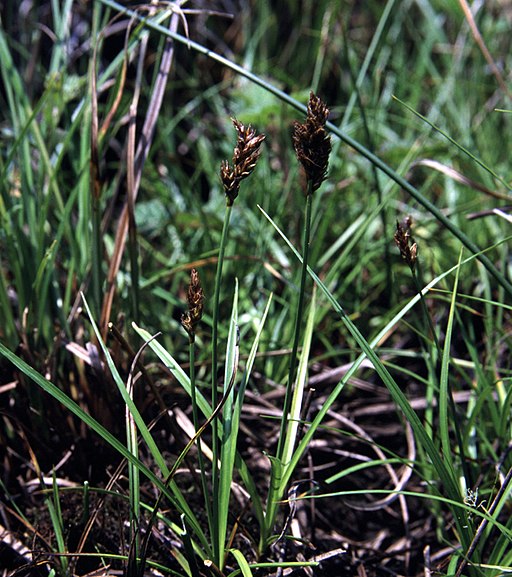Classification System: APG IV
Superregnum: Eukaryota
Regnum: Plantae
Cladus: Angiosperms
Cladus: Monocots
Cladus: Commelinids
Ordo: Poales
Familia: Cyperaceae
Subfamilia: Cyperoideae
Tribus: Cariceae
Genus: Carex
Species: Carex pansa
Name
Carex pansa L.H.Bailey, Bot. Gaz. 13: 82 (1888).
Synonyms
Homotypic
Carex arenicola subsp. pansa (L.H.Bailey) T.Koyama & Calder, Canad. J. Bot. 43: 1389 (1965).
Distribution
Native distribution areas:
Continental: Northern America
British Columbia, California, Oregon, Washington
References: Brummitt, R.K. 2001. TDWG – World Geographical Scheme for Recording Plant Distributions, 2nd Edition
References
Primary references
Bailey, L.H. 1888. Botanical Gazette, Paper of Botanical Notes. Crawfordsville, IN, Chicago, IL 13: 82.
Links
Govaerts, R. et al. 2020. Carex pansa in Kew Science Plants of the World online. The Board of Trustees of the Royal Botanic Gardens, Kew. Published online. Accessed: 2020 Jan 30. Reference page.
International Plant Names Index. 2020. Carex pansa. Published online. Accessed: Jan 30 2020.
Govaerts, R. et al. 2020. Carex pansa in Kew Science Plants of the World online. The Board of Trustees of the Royal Botanic Gardens, Kew. Published online. Accessed: 2020 Jan 30. Reference page.
Tropicos.org 2020. Carex pansa. Missouri Botanical Garden. Published online. Accessed: 30 Jan 2020.
USDA, ARS, Germplasm Resources Information Network. Carex pansa in the Germplasm Resources Information Network (GRIN), U.S. Department of Agriculture Agricultural Research Service. Accessed: 08-Apr-12.
Vernacular names
English: sanddune sedge
Carex pansa is a species of sedge known by the common name sand dune sedge. It is native to coast of western North America from British Columbia to California, where it grows in dunes and other sandy habitat. This grasslike sedge produces sharply triangular stems up to about 40 centimeters tall from a network of thin, long, coarse rhizomes. The inflorescence is a cluster of several spikes of dark brownish flowers. The plant sometimes produces only male or female flowers in its inflorescences, but not both. This sedge is sometimes used as a grass substitute in local landscaping schemes.[1][2]
References
Bay Area Landscaping
Sedge Lawns for Every Landscape
Retrieved from "http://en.wikipedia.org/"
All text is available under the terms of the GNU Free Documentation License


